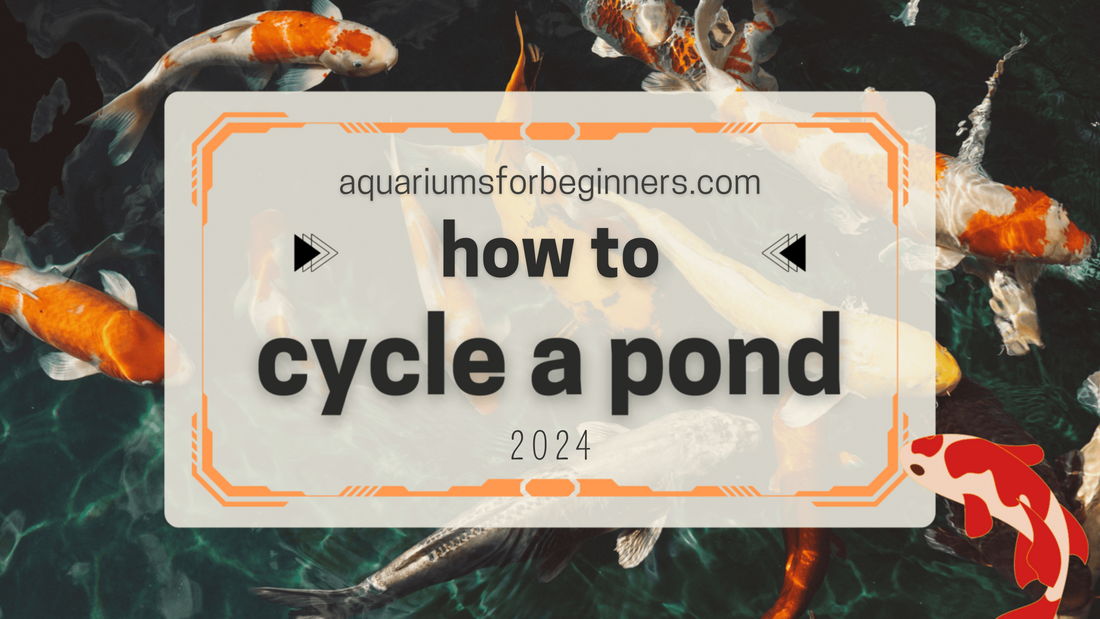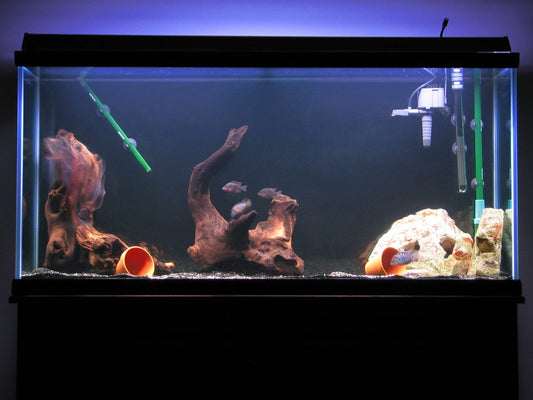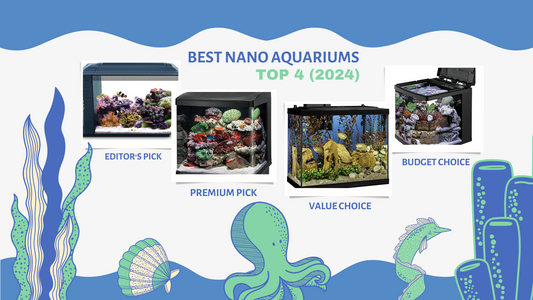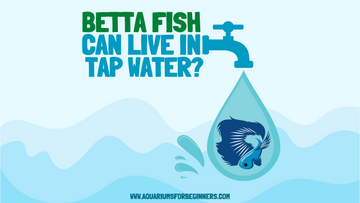How to Cycle a Pond (2024)

A garden oasis, shimmering waters, and playful flashes of fish beneath the surface—there’s a reason many homeowners or commercial owners alike dream of having a fish pond.
If you count yourself among them (which I assume you do given that you are here), you should know that creating a new pond is more than just digging a hole, filling it with water, and adding fish to your pond.
It is about planting a well-balanced ecosystem that will let your fish and plants sustain life and beauty. And clean waters? A healthy ecosystem can do that for you, too!
Now you might be wondering just how easy or tricky it is to create and maintain a healthy, well-balanced ecosystem.
To tell you frankly, the heart of a thriving pond lies in understanding its natural cycles.
Whether you are starting a garden pond or a more expansive backyard pond, everything else becomes easy when you know how to cycle a pond and what really goes on in it.
What’s this natural cycle, you might ask?
It’s the nitrogen cycle.
Very science, I know. But at its core, it really is just Mother Nature’s simple way of keeping the water clean by recycling waste!
Understanding Nitrogen Cycle
Imagine a pond full of fish. Naturally, they produce waste and, with this, also release ammonia into the ecosystem. This ammonia, however, is actually a byproduct that spells disaster for your aquatic inhabitants.
Without a system in place to neutralize this harmful compound, the water quality deteriorates rapidly. Fish would be swimming in a toxic soup, unable to breathe properly, and at risk of falling sick or even dying.
But nature always comes to the rescue! The nitrogen cycle is a continuous process that ensures a pond remains a livable habitat for its inhabitants.
It’s a balance of chemicals and living organisms working together to maintain water quality.
Here’s how it works.

Kickstarting the Pond Cycle with Ammonia
Every thriving pond cycle starts with ammonia. In short, you need ammonia to initiate the cycle and get those beneficial bacteria working.
One effective way to introduce ammonia is by adding fish to your pond.
Now, some people will let new ponds sit untouched for weeks to mature or settle. However, waiting too long can, in fact, halt the process.
When you add fish to ponds, they digest their food and they naturally produce waste. This fish waste actually contains ammonia.
Moreover, just like how humans exhale carbon dioxide when breathing, fish respire, and release ammonia directly into the water.
The Role of Nitrifying Bacteria
Before all else, here’s a little background for you.
Nitrifying bacteria ensure that the water remains safe for fish or other aquatic organisms by converting harmful chemicals into less toxic compounds.
The harmful chemicals? Ammonia! Very toxic.
The less harmful compounds? Nitrates.
From point A to point B to point C, here is what happens.
Once ammonia is present in the water—be it from fish waste, respiration, or introduced manually—the first group of nitrifying bacteria, primarily Nitrosomonas species, finds your pond and converts this toxic compound into nitrites using dissolved oxygen.
It’s crucial to understand, however, that while nitrites are one step further from the harmful effects of ammonia, they are still toxic to most pond life, affecting fish health.
Still posing a threat to fish ponds, the cycle doesn’t stop at nitrites.
Another group of nitrifying bacteria, mainly of the Nitrobacter species, transforms nitrites into nitrates, which is the least harmful compound of the three, again via oxidation.
How Plants and Algae Play Their Part
Nitrates are essential nutrients for plants and algae. Meaning, they feed on these nitrates, fueling their growth.
Fish, in their natural behavior, consume some of these plants and algae, which results in the production of waste and, once more, the release of ammonia.
Additionally, as plants shed leaves or undergo natural decay, they reintroduce ammonia into the pond, and the cycle continues.
This self-sustaining system of conversion and balance is the foundation of your pond’s water quality.
Worried about uncontrolled algae growth?
Well, in a healthy pond environment, it’s absolutely expected to find some algae – it’s a sign that your pond’s ecosystem is functioning! However, we don’t want it too overbearing.
Introducing more aquatic plants can help keep algae growth in check because you are basically equipping your pond with natural competitors. It’s advised to cover about 60% of the pond with plants to not only limit nutrients for algae but also shade the water, inhibiting the growth of algae.
Oh, and another big thing!
These plants provide hiding spots for fish, especially from predators. Whether it’s a curious heron or a stealthy raccoon, your fish pose as easy prey to these guys. Dense plant coverage gives fish the opportunity to hide and evade these unwanted visitors.
Steps in Cycling a Pond

With the nitrogen cycle under your belt, it’s now time to set the stage for a thriving pond.
Every new pond requires cycling to make it hospitable for garden pond fish. This process ensures that beneficial bacteria break down waste, keeping the water levels in your backyard pond optimal. Adding fish too soon or without checking water parameters can lead to complications.
Here are the steps in initiating the cycling process for your pond to ensure your water levels are acceptable and to keep your fish healthy.
Step 1: Preparation of Garden Pond
The journey to a vibrant pond ecosystem begins long before the first fish is introduced or the first plant takes root.
Is Your Pond Size Enough?
Before anything else, you need to make sure your pond is spacious enough for your intended fish.
If you plan to house a small fish like the goldfish, you will most likely just need a small pond. However, for places with a cold climate, a two feet deep pond is recommended to account for the winter ice.
For larger fish, like the koi fish, the pond needs to be spacious and probably 2-3 feet deep to accommodate the large koi and their breeding habits.
Water Treatment and Chlorine Neutralization
To set up your healthy pond, make sure the pond water is clean and free from harmful substances.
Now if you’re filling your pond for the first time, you might opt for tap water. The problem here is that your tap water contains a substance called chlorine. Familiar, right?
Tap water, while treated with chlorine for our safety, can be a silent killer in the pond environment.
Remember those good bacteria that help break down harmful stuff in the water? Chlorine kills them.
The solution? Dechlorinators.
These readily available products neutralize chlorine, while other conditioners can adjust pH levels.
A thriving fish pond is more than just water, plants, and fish. Beneath your pond water surface must lie a robust system working tirelessly to maintain balance.
Filtration Systems
Filtration, in the long run, will save you tons of effort, time, and even money.
Without proper a filter system, debris builds up, the water gets murkier, and harmful chemicals accumulate. This mess doesn’t just put your fish and plants at risk; it also means you’ll be rolling up your sleeves more often for intensive cleaning.
And trust me, this can end up costing more, both in treatments and in replacing stressed or lost fish!
Now that we have established its role, you must know there are two primary types of filtration systems you can incorporate in your garden ponds or should I say, backyard ponds?
- Mechanical Filtration
The first line of defense in this system is mechanical filtration. Just as you’d use a sieve to sift out leaves from a swimming pool, mechanical filtration works similarly for your pond.
These systems capture and retain visible debris. This is also why you need to size your filtration according to your pond size.
By capturing this waste, mechanical filters help you easily remove potential sources of decay before they start breaking down and producing more and more ammonia. We don’t want a lethal dose of ammonia, do we?
- Biological Filtration
Then there’s the biological filtration system, which is honestly a bit cooler. This isn’t about catching things you can see; it’s about managing the stuff you can’t.
We need those good bacteria, right? But where exactly do they come from?
The good news is, that you can find them everywhere, even more in places where there is a large surface area.
In biological filtration, tools like waterfall filters, pond filters, and pressurized filters contain filter media, often in the form of filter pads, that provide vast surface areas for these bacteria to grow.
Aeration Systems
So, you’ve set up your garden pond, added the right filtration, and now you’re thinking about the fish you might have in your backyard pond – koi, goldfish, or any other cold-water fish.
They’re swimming around, enjoying the water, but they can’t just consume oxygen like we do—come up the pond water and take a deep breath.
Aeration is crucial, especially if you are housing a new pond. It introduces air into the water, making sure your fish have a healthy life. Here’s what aeration is for your fish:
- Oxygen-Rich Environment
For fish, a well-aerated pond ensures they get the necessary oxygen levels they need to swim around happily. Especially in the early summer, when water temperatures rise, pond water naturally heats up. As it does, its oxygen-holding capacity drops, hence less oxygen becomes available.
- Gas Exchange
It’s not just about getting oxygen in; it’s also about letting the bad stuff out. Especially during a colder climate where harmful gases are trapped, aeration helps circulate water beneath the ice.
- Avoiding Stagnancy:
Who wants to peer into their garden pond and see murky water with too much algae? Definitely not you. Nor me. A stagnant pond gifts you these: unwanted pests, algae, and bacteria. With proper aeration, you can keep the water quality at maximum.
Step 2: Adding a Source of Ammonia

And so, we reach the next major step: introducing an ammonia source.
Remember, every shimmering backyard pond, be it brimming with koi fish or dancing goldfish, begins its journey with the invisible – ammonia.
Now, while I emphasized earlier that fish are fundamental to initiating the cycle, let’s shed light on the fact that they aren’t the only source. Here are some of them.
1. The Importance of Adding Fish
Fish, the lifeblood of your pond’s ecosystem, play an irreplaceable role in this cycling saga. But, here’s the catch: you can’t just toss a bunch of beautiful fish into a new pond.
As we’ve established, the initial environment is not bacteria-rich, making it difficult to introduce fish of just any kind to a pond.
So, what you want to do is to introduce hardy fish to your pond. Not too many fish, though, because too much ammonia will eventually harm them. They are hardy, yes. But not invincible!
Remember, it’s always about balance. Start with approximately 1 to 2 fish for every 10 gallons of water to kickstart ammonia production. For this part, we recommend those small hardy fish such as mollies, platies, guppies, and mosquitofish!
2. Fish Food as Ammonia Source
Now, it’s not just the fish themselves but also what you feed them. Did you know? Even if there aren’t any fish eagerly waiting for their next meal, this fish food can serve another purpose.
When enough food decays, it releases ammonia, making it an excellent choice to initiate the cycling process. A pinch here and there and you’re on your way!
3. Decaying Plants
As mentioned, the pond cycle revolves around the production of ammonia, its transformation into nitrates, and the subsequent consumption of those nitrates.
Who takes up these nitrates? You got it—the aquatic plants and algae!
As these plants undergo natural decay or shed leaves, they reintroduce ammonia into the environment, keeping the cycle running.
Nature, nature, in her natural dance, ever leaves us in trance!
Step 3: Monitor Ammonia, Nitrites, and Nitrates Levels
Testing the water will confirm if ammonia, nitrite, and pH levels are within the desired range. This step is critical both before and after adding your fish.
To monitor them, the first thing you need to have an idea of is the ideal concentration of each chemical. Ideally, you’d want ammonia concentrations within the 0-1 ppm range, nitrite levels less than 5 ppm, and a water pH level between 7.0 and 8.0.
There are straightforward pond test kits available in the market that can help start your business. These kits offer rapid and accurate results, presented in ppm. Below, we’ve handpicked some of the best kits for your consideration.
- API Pond Master Test Kit
- Tetra EasyStrips
- Salifert Nitrate Test Kit
Step 4: Introducing Pond Fish

So, once you’ve prepared your pond fish for weeks and ensured the new pond water chemistry is optimal, the exciting phase of introducing fish arrives.
For most ponds, especially koi ponds, the choice often boils down to two favorites: koi fish and goldfish. These cold-water fish are not only beautiful but also hardy.
Now, before you add fish, acclimate them first. Float the bag with the new fish in the pond water for about 15-20 minutes. This balances the water temperature between the bag and your pond. Slowly introduce pond water into the bag over the next 15 minutes, ensuring the fish adjust to your garden pond’s water parameters.
Once you’ve successfully introduced fish to your garden pond, the next essential task is feeding them. Opt for high-quality fish food and feed them only as much food as they can consume in a few minutes to avoid decay which can suddenly cause ammonia spikes.
Step 5: Maintain the Cycle
Even if the pond appears to be stable, subtle changes can affect the health of your fish and plants. Hence, you must regularly monitor your pond water levels. It is a non-negotiable!
Avoid Oversticking and Overfeeding!
Over time, the desire to add fish to your garden pond increases as the ecosystem stabilizes. But too many fish added, and you risk disrupting your pond’s natural balance. Hence, always consider adding fish gradually, so as to not overwhelm the existing ecosystem.
But how many fish is considered overstocking? Generally speaking, more than 2 to 3 fish every few weeks is unacceptable.
Similarly, overfeeding results in excess food decay, which can spike ammonia levels. You don’t want this to happen, so always feed in moderation.
Regular Water Changes
But while you ought to follow these things, pond water does not remain pristine all throughout. Over time, the concentration of nitrates can elevate to harmful levels.
This is why regular water cycling is important. A good rule of thumb is to change 10-30% of the pond water with fresh water to dilute these concentrations.
If you possess water tanks, consider using that stored water for your pond. Tank water, especially if it’s been sitting for a while, can be more balanced than fresh tap water.
In scenarios where rainwater or tank water is unavailable, and tap water becomes the only option, it’s imperative to treat it. Remember that chlorine? They are not welcome.
Using a water detoxifier can neutralize the chlorine, rendering the water plant- and fish-safe.
Conclusion
So, that’s the scoop on pond cycling! It’s just like laying the foundation of your house, right?
Without it, the entire structure (or ecosystem, in this case) can become unstable, leading to unhealthy conditions for fish and other pond inhabitants.
The presence of beneficial bacteria ensures that harmful waste products are efficiently processed, keeping the pond’s inhabitants healthy and the water clear.
Although it might sound daunting at first, trust me, with a bit of patience and care, it all comes together.
If you’ve got questions or just want to chat about all things pond, drop by our Facebook Group. Loads of fellow pond lovers are there, sharing advice and stories.
Dive in, and let’s make your pond the best it can be!

No comments











comments